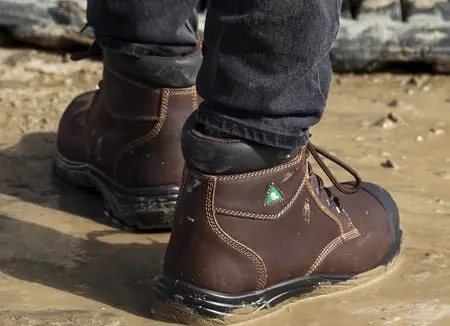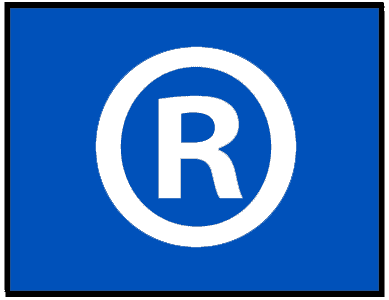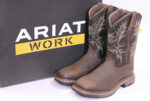If you want great protection from your Personal Protective Equipment, looking for CSA-approved and ASTM compliant safety work boots will be your guide to assured safety capabilities.
In North America, the CSA is a certification entity that tests for safety standards, including the workplace.
When manufacturers of footgear produce their work boots, a CSA-certified rating will mean that a specific work boot offers specific measured safety features.
After lots of research and on-the-job testing, we selected the Carharrt Six-inch Men’s Rugged Flex CSA Work Boot as our overall pick for the best CSA work boots. What convinced us? The Eva cushioned footbeds, a “Storm Defender” boot waterproof membrane, and the Swen Flex PR puncture-resistant plate in the outsole. This boot also boasts 400 g of Thinsulate insulation.

Another pair of CSA work boots that got our attention and should get yours is Nat’s Waterproof CSA S620 Work Boot. It’s expensive, but certainly a high-quality boot, especially for those in need of EH protection.
| Work Boot | Uppers | Outsoles | Safety | Features |
|---|---|---|---|---|
| Carharrt Six-inch Men’s Rugged Flex CSA | 100% leather | Rubber | Composite safety toe, CSA grade 1, ATM 2413-17 | Waterproof, Insulated |
| Carhartt 8-inch CSA Ground Force Cmr8959 | 100% Leather | Rubber | Composite safety toe, CSA Grade 1, ASTM 2413-17 | Waterproof, Insulated |
| Nat’s Waterproof CSA S620 | Helcor Leather | Rubber | Steel Toe, CSA Grade 1, dielectric | Waterproof, Exceptionally lightweight |
| Ariat Workhog WST Men’s Metatarsal H2O | Leather | Duratread Rubber | Composite toe, ASTM F2413-11, CSA Grade 1 | Waterproof, U-Turn entry, ATS Max platform stability |
Our List of Best CSA Work Boots
Best Overall CSA Work Boot
1.) Carharrt Six-inch Men’s Rugged Flex CSA Work Boot
- Upper is black oil tanned leather with rubber toe and heel bumpers
- Outsole is Cement constructed with Carhartt rubber Rugged Flex outsole
- Removable EVA cushion insoles
- Storm Defender waterproof membrane
- CSA Grade 1 Safety Toe and Puncture Resistant Swen Flex PR Plate and ASTM 2413-17 PR EH
Prices pulled from the Amazon Product Advertising API on:
Product prices and availability are accurate as of the date/time indicated and are subject to change. Any price and availability information displayed on [relevant Amazon Site(s), as applicable] at the time of purchase will apply to the purchase of this product.
Carhartt proposes this CSA-approved six-inch work boot with 100% leather boot uppers and rubber outsoles. The boot shaft extends to the ankle from the foot arch.
The outsole platform measures approximately one inch. Both the heel and the toe have rubber bumpers. Carhartt uses the cement construction method to attach its rugged flex outsole.
Eva cushioned footbeds are removable and a “Storm Defender” boot membrane is breathable and waterproof. The safety ratings are CSA grade 1 for the safety toe and electrical shock protection and the Swen Flex PR pate in the outsole is puncture resistant.
This work boot complies with ASTM 2413-17 PR EH requirements. This boot boasts 400 g of Thinsulate insulation.
Pros
-
-
- Leather uppers
- Rubber outsoles
- Toe and heel bumpers
- Cement construction
- EVA footbeds
- Waterproof membrane
- CSA and ASTM safety rated
-
Cons
-
-
- Some durability considerations
-
Best Waterproof Insulated Cold Weather CSA Work Boot
2.) Carhartt 8-inch CSA Ground Force Cmr8959 Work Boot
- Upper is black oil tanned leather with rubber toe and heel bumpers
- Outsole is Cement constructed with Carhartt rubber Ground Force outsole
- EVA midsole with dual foam Insite Technology foot bed
- Storm Defender waterproof membrane and 400 gm 3M Thinsulate insulation
Prices pulled from the Amazon Product Advertising API on:
Product prices and availability are accurate as of the date/time indicated and are subject to change. Any price and availability information displayed on [relevant Amazon Site(s), as applicable] at the time of purchase will apply to the purchase of this product.
100% leather boot uppers and rubber outsoles are the principal premium materials for these 8-inch CSA-approved work boots from Carhartt.
The boot covers the ankle completely for good support and protection. Oil-tanned leather together with toe and heel rubber bumpers offer good resistance to abrasions and more.
The Ground Force outsole uses cement construction while the midsole is EVA with a dual foam footbed for cushioning and comfort.
Carhartt’s Storm Defender membrane is integrated for complete waterproofing. 400g of 3M Thinsulate offers protective insulation for colder weather.
Safety certification includes CSA Grade 1 safety toe and Swen flex puncture-resistant plate as well as compliance with ASTM 2413-17 puncture resistance and EH.
Pros
-
-
- Leather uppers
- Rubber outsoles
- Toe and heel bumpers
- Cement construction
- EVA footbeds
- Waterproof membrane
- CSA and ASTM safety rated
-
Cons
-
-
- Some durability considerations
- Sizing
-
Best CSA Electrical Hazard Work Boot
3.) Nat’s Waterproof CSA S620 Work Boot
- LIGHT AS A FEATHER
- WORK BOOTS FOR MEN WATERPROOF
- IMPACT, SHOCK & VIBRATION ABSORPTION
- CSA CLASS 1 & DIELECTRIC WORK BOOT APPROVED
- NON SLIP BOOTS FOR MEN & HIGH WEAR RESISTANCE
Prices pulled from the Amazon Product Advertising API on:
Product prices and availability are accurate as of the date/time indicated and are subject to change. Any price and availability information displayed on [relevant Amazon Site(s), as applicable] at the time of purchase will apply to the purchase of this product.
A steel safety toe and a steel plate guarantee these work boots their well-deserved CSA Grade 1 rating together with being dielectric.
They can withstand force up to 270 pounds in impact protection and resist electric shocks. The design of both the heel and the outsole offers electrical insulating capabilities to withstand a whopping 18,000 volts with a 1mA leakage current for sixty seconds.
Toughness and comfort characterize these boots. Despite all of the protection offered thes boots are ultra-lightweight at 2.2 lbs. per boot diminishing fatigue.
A breathable membrane is waterproof and keeps feet dry in inclement weather conditions. The outsoles are double density with a Thermo polyurethane-reinforced heel and offer slippage resistance.
Pros
-
-
- Leather uppers
- Rubber outsoles
- CSA grade 1 and ASTM compliant
- Great EH protection
- Non-slip
- Ultra-lightweight
- Waterproof
- Attractive style
-
Cons
-
-
- Expensive
- Thin bootlaces
- Comfort could be improved
-
Best Pull-on CSA Work Boot
4.) Ariat Workhog WST Men’s Metatarsal H2O Work Boot with Composite Safety Toe
- WATERPROOF WORK BOOT: These robust and rugged pull-on boots for Ariat are built to work hard and keep you dry and comfortable throughout the day thanks to the Waterproof Pro construction.
- ATS MAX TECHNOLOGY: These wide square toe boots for men are designed with the Ariat’s ATS Max platform that offers ultimate side-by-side stability to minimize foot fatigue while ensuring proper body alignment even in the harshest, outdoor work environments, such as oil and gas exploration.
- U-TURN ENTRY SYSTEM: Regardless of the shape of your foot, these men’s leather boots ensure easy entry and an excellent fit with the Ariats innovative U-Turn Entry System.
Prices pulled from the Amazon Product Advertising API on:
Product prices and availability are accurate as of the date/time indicated and are subject to change. Any price and availability information displayed on [relevant Amazon Site(s), as applicable] at the time of purchase will apply to the purchase of this product.
Do you prefer a pull-on work boot? These Ariat Workhog pull-on work boots featuring metatarsal guards will give you safety, style, and convenience all-in-one.
Long shafts comply with ASTM and CSA safety standards protecting with a safety toe and an outsole that is puncture-resistant thanks to a Swen-flex composite plate.
Boot uppers are in leather and feature a square toe design that improves comfort with a bit more toe room together with an ATS Max platform to increase stability and contrast foot fatigue. The interior lining in mesh improves breathability and the footbed is well-cushioned.
This pull-on boot is designed with a flexible panel in the boot back so you can put on or pull off your work boots with absolute ease.
The outsole boasts heavy-duty DuraTread for slippage resistance on watery or oily surfaces. Goodyear welt construction ensures durability.
Pros
-
-
- Internal Metatarsal protection
- EH protection
- 100% leather uppers
- Waterproof
- Lightweight
- Durable
- Composite safety toe
- Rubber outsoles
-
Cons
-
-
- Expensive
-
CSA
CSA refers to the CSA Group which was formerly called the Canadian Standards Association. This is an entity that develops safety standards in approximately 57 different product areas. This organization finds industry, consumer, and government representatives among its members.
The Group got its start in 1919 as CESA or the Canadian Engineering Standards Association and was created to establish standards. When a product carries the CSA symbol, it means that it has undergone independent testing and complies with recognized safety standards
The adherence to the majority of these standards is completely voluntary on the part of manufacturers, but this voluntary choice is highly respected because it means that the product had been tested independently for safety performance, and CSA markings are registered. This means that these markings can only be applied by someone licensed to do so by CSA.
CSA also has a sister company called CSA International that is a testing laboratory that is internationally recognized. Often manufacturers may opt for this entity because local legislation requires safety certification.
CSA Markings
The CSA marking or rectangle on a work boot indicates some safety feature present and tested in or on the work boot. CSA features various safety patches that indicate differing features. Among these, we find:
CSA Green Marking

If you find a CSA Green patch on your work boot, this indicates that the boot has both a safety toe and offers puncture-resistant protection. These features are often required by employers at industrial settings or construction sites.
A grade 1 protective toe cap means that your boots will protect your toes from impact injury in the event that heavy tools, materials, or heavy debris fall onto your feet. These safety toe caps may be made of composite materials, alloys, or steel and should protect up to 120 joules.
The puncture-resistant outsole should be able to resist forces of 270 pounds or 1200 Newtons. Puncture-resistant soles can feature steel or composite panels or plates to protect feet.
CSA White Marking

A white CSA rectangle patch tells you that the work boots’ outsoles are EH or electrical hazard proof. They will withstand charges up to 18,000 electrical volts and offer ImA current leakage for approximately sixty seconds.
CSA Blue Marking

The CSA blue rectangle indicates that the work boot features a protective toe cap rated Grade 1 that can resist 125 joules.
CSA Yellow Marking

The Yellow rectangle patch from CSA that includes a grounding symbol and a green SD, tells you that this pair of work boots come with outsoles that dissipate static. These soles will be manufactured in an anti-static material and help to control electrostatic charges.
See also: Work Boots Safety Symbols Demystified!
How Do You Choose?
Before even seriously considering any pair of safety work boots, check to see if they feature a CSA safety rectangular patch, its color, and what the safety marking indicates.
The precise safety patch that you need to look for should represent the safety standards for your work environment.
Other Features to Consider
The purchasing of a safety boot is an investment of your money made for your protection. Other features to search for when making this important investment include:
#1. Construction and Durability Features
Together with premium materials, the construction method used in producing a work boot will influence durability. Weight and boot flexibility will be affected.
The three construction methods used most commonly for the attachment of boot uppers to boot outsoles include:
1.) Cement. A simpler and less expensive method that glues boot uppers to outsoles with industrial-grade adhesive. As the glue deteriorates, durability lessens.
2.) Goodyear Welt. Renowned for its durability, this is a water-resistant technique. The outsole is connected to the upper boot with leather, plastic, or rubber.
Boots using the Goodyear welt construction process are more expensive but allow for repair and the replacement of outsoles.
3.) Molded. Here, an injection technique is used to join the boot components. Stitching and adhesives are not employed in the construction and the binding is resistant to water. They cannot be repaired, so once they are worn down, they will be tossed.
#2. Resistance Capabilities
A priority when choosing work boots will be oil and slip-resistant outsoles for increased traction. Outsole tread should feature shapes and designs that afford a better grip on uneven terrain or slippery surfaces. Designs will vary and may include squares, circles, triangles, or hexagons.
The spaces between the tread design need to adequately channel any water or liquids outward to boot sole edges. When fluids remain trapped underneath an outsole, this can cause you to slip.
The tread thickness is likewise important. Thin tread that wears too quickly, will reduce resistance to slippage.
#3. Comfort Features
Shock absorption is an important comfort feature when selecting a work boot. Some boots will have specific features integrated into the design to prevent foot fatigue and increase comfort during long work shifts such as insoles with exceptional cushioning and midsoles that are designed to absorb shock during walking and movement.
A breathable moisture-wicking work boot will offer air ventilation and contrast perspiration leading to odors. Sweaty feet all day and the bad smells will lead to discomfort.
Breathability increases air circulation to assist moisture-wicking boot liners to keep feet dry. This prevents chafing, blisters, and undesired fungus.
#4. Waterproofing and Insulation
Waterproof boots can determine if your feet remain dry depending on where you work and what type of inclement weather you may be exposed to.
Some boots feature a waterproof membrane that will add some cost to the price, but, if you must work in extreme meteorological conditions, it might be wise to invest in a more expensive work boot.
If you work in conditions that expose you to bad weather or frequently walk on surfaces that have water or liquids present, select waterproof work boots.
Insulation is important for workers in colder climates and that work specifically outdoors. This feature is not optional.
Depending on the kind and amount of insulation a work boot may seem bulkier and heavier, but with new insulation materials, the difference may very well be minimal.
#5. Weight
Heavy boots can add to the strain of the feet and legs which can lead to discomfort. Lightweight boots can be of great benefit if you are on your feet most of the day.
Conclusion
When looking for a top-quality brand-name work boot with optimal puncture resistance and a protective safety cap, you can’t do better than to look for CSA-approved safety work boots.
Look for the color-coded CSA rectangular patches to guarantee your safety every day of the week that you are on the job.











